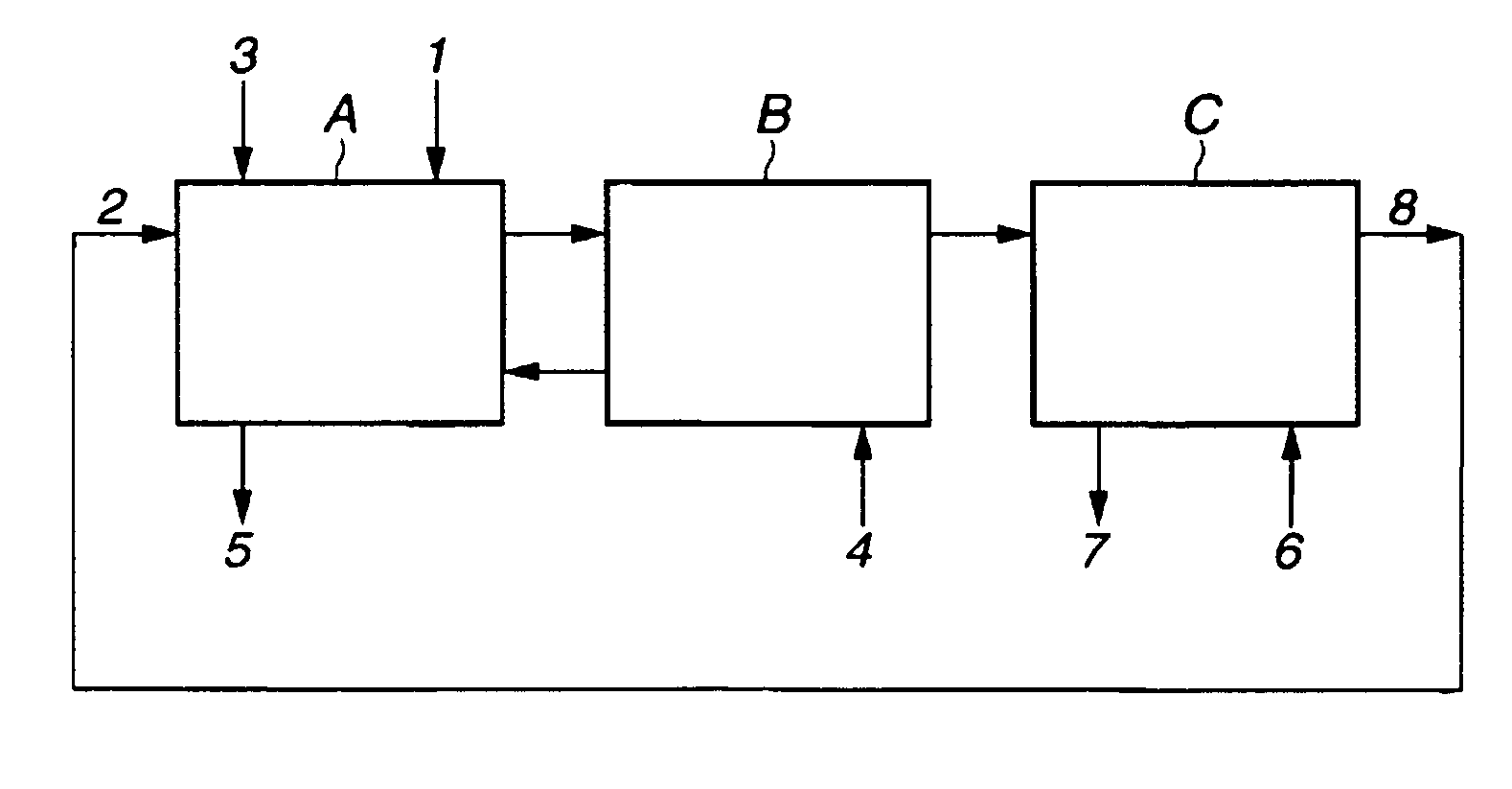Method for extracting and separating light rare earth element
a rare earth element and extraction method technology, applied in rare earth metal chlorides, process efficiency improvement, chemistry apparatus and processes, etc., can solve the problems of large separation system, complex separation process, and resource crisis, and achieve small size plant, small size plant, and commercially acceptable efficiency
- Summary
- Abstract
- Description
- Claims
- Application Information
AI Technical Summary
Benefits of technology
Problems solved by technology
Method used
Image
Examples
example
[0035]Experiments and Examples of the invention are given below by way of illustration and not by way of limitation. The concentration of an LREE in an aqueous solution was measured by an ICP atomic emission spectrometer (ICP-7500 by Shimadzu Corp.).
example 1
[0048]This example used a counter-current flow multistage mixer-settler including sections and flow lines as shown in FIGS. 1, and D2EHDGAA as extractant for extracting and separating neodymium, praseodymium and cerium in sequence from a mixture of lanthanum, cerium, praseodymium and neodymium.
[0049]The organic phase was a kerosine solution of 0.5 mol / L of D2EHDGAA. The aqueous phase was 30 L of an aqueous solution of lanthanum chloride, cerium chloride, praseodymium chloride and neodymium chloride in a molar ratio of lanthanum:cerium:praseodymium:neodymium=1:1:1:1 and in a concentration of 0.1 mol / L of lanthanum+cerium+praseodymium+neodymium.
[0050]A counter-current flow multistage mixer-settler as shown in FIG. 1 included an extraction section A of 14 stages, a scrubbing section B of 10 stages, and a back-extraction section C of 8 stages. The organic phase and the aqueous phase were contacted for extraction and separation at a temperature of 35° C. which was below the flash point o...
example 2
[0072]This example used a counter-current flow multistage mixer-settler including sections and flow lines as shown in FIGS. 1, and D2EHDGAA as extractant for extracting and separating neodymium from a mixture of praseodymium and neodymium.
[0073]The organic phase was a kerosine solution of 0.5 mol / L of D2EHDGAA. The aqueous phase was 30 L of an aqueous solution of praseodymium chloride and neodymium chloride in a molar ratio of praseodymium:neodymium=1:1 and in a concentration of 0.1 mol / L of praseodymium+neodymium.
[0074]A counter-current flow multistage mixer-settler as shown in FIG. 1 included an extraction section A of 12 stages, a scrubbing section B of 12 stages, and a back-extraction section C of 8 stages. The organic phase and the aqueous phase were contacted at 35° C. to effect extraction and separation. The aqueous phase was fed at a flow rate of 15 L / hr from line 1, the organic phase fed at a flow rate of 21 L / hr from line 2, a 4 mol / L sodium hydroxide aqueous solution fed ...
PUM
| Property | Measurement | Unit |
|---|---|---|
| pH | aaaaa | aaaaa |
| flash point | aaaaa | aaaaa |
| pH | aaaaa | aaaaa |
Abstract
Description
Claims
Application Information
 Login to View More
Login to View More - R&D
- Intellectual Property
- Life Sciences
- Materials
- Tech Scout
- Unparalleled Data Quality
- Higher Quality Content
- 60% Fewer Hallucinations
Browse by: Latest US Patents, China's latest patents, Technical Efficacy Thesaurus, Application Domain, Technology Topic, Popular Technical Reports.
© 2025 PatSnap. All rights reserved.Legal|Privacy policy|Modern Slavery Act Transparency Statement|Sitemap|About US| Contact US: help@patsnap.com

